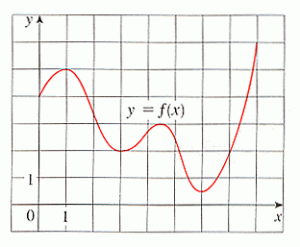Today, we all know that any two objects, if dropped from a 20-story building, will fall at the exact same rate and hit the ground at the exact same time. For many hundreds of years, though, this was considered counter-intuitive, and indeed, incorrect. While society has been asking scientific questions about the movement of matter for over 500 years, an acceptable answer arrived much later than this. A book by Isaac Newton published in 1687 explained the mathematical reasoning behind falling objects, and his theories stand today as the best models we have to predict gravitational acceleration.
So what does all that have to do with falling objects? When I was younger, I was sure that a car and a bowling ball would fall at different speeds – after all, if the car is many times heavier, then it’s pushing downward at an equivalently high rate, and so it should fall faster. This logic was widely held before Newton (and his predecessors) broke new ground in explaining the behavior of gravity. Even if you know today that all objects fall at the same time, you might not know exactly why this is. As it turns out, the answer is unbelievably simple. It’s actually pretty amazing how obvious it seems in retrospect, but we have centuries of research to draw on, so whatever.
So why do all objects fall at the exact same speed?
The answer goes back to Newton’s second law, perhaps the most famous second law (with the possible exception of thermodynamics’s second law), which states that F = M * a. In English, the force acting on an object can be indirectly calculated by finding the object’s mass and also by looking at how fast it’s accelerating. If we know these two things, we can come up with a numerical response to the “amount of bashing” that this object is experience. You can push a car up a hill at a very slow rate, but if that rate is constant (say, one foot per minute), then this equation tells us that no forces are acting here. This goes back to Newton’s first law – just because an object moves doesn’t mean it’s experiencing force. When you’re pushing a car, your force exerted on the car is exactly cancelled by the resistance of the car to movement. Sure, you have to exert some force to get the car going, but once it’s moving smoothly, there are no more forces at play.
So if we look at dropping objects off of a building, we can use this same principle: force equals mass times acceleration. Since it’s not true that all objects have the same mass (does a car “weigh” the same as a pencil?), that means the 2 other variables in F = M*a must always equalize, no matter the object. And indeed, this is the case.
First let’s look at our car. It has a very high mass, and we know that acceleration is constant on earth, so that leaves only force, F, as the changing value here. That’s no problem – for now, let’s say that a falling car has more force acting on it than a pencil. At the same time, our pencil has much less mass, but still falls with the same rate of acceleration, so its force must also be much, much smaller than the car’s.
Here’s the final jigsaw puzzle piece here: the gravitational force between any two objects depends only on their masses. It will change depending on the mass of each object, but no other factors matter.
Let’s drop our car off the side of a building once more, and say that it has ten times the mass of a motorcycle. The car will have ten times the force acting on it as explained by F = M*a, but because the mass is ten times higher, the car is ten times more “resistant” to being moved. Let’s see this in our equation:
Force on an object = its mass * its acceleration
F = M * a
Since we said our car is ten times heavier than a motorcycle, we’ll add a 10 in front of the mass.
F = 10 M * a
The force, then, is going to be 10 times higher than if the mass were equivalent to just 1 “unit.”
10 F = 10 M * a
Our 10s cancel here, and acceleration is STILL equal to F / M. Repeat this calculation with a pencil, and you’ll see the same result: a = F / M. In other words, a car that’s ten times heavier than a motorcycle will experience ten times the forces, but this is only because its mass is ten times greater. Since the force depends on the mass, we expect this to happen. But because of the mass being ten times greater, the extra force pulling on the car is exactly cancelled by its high mass.
Stephen Hawking explains this perfectly in his book, A Brief History of Time.
One can now see why all bodies fall at the same rate: a body of twice the weight will have twice the force of gravity pulling it down, but it will also have twice the mass. According to Newton’s second law, these two effects will exactly cancel each other, so the acceleration will be the same in all cases.
In fact, this mystery that eluded mankind for centuries is adequately explained by the simple equation we’ve used above. There are no complicated numbers, constants, or imaginary numbers. There’s no calculus, no slopes and no polynomial factoring. The equation is so simple that it almost seems impossible, but you can use it just as we have here to explain exactly why everything falls at the same rate. Kind of nuts, isn’t it?

